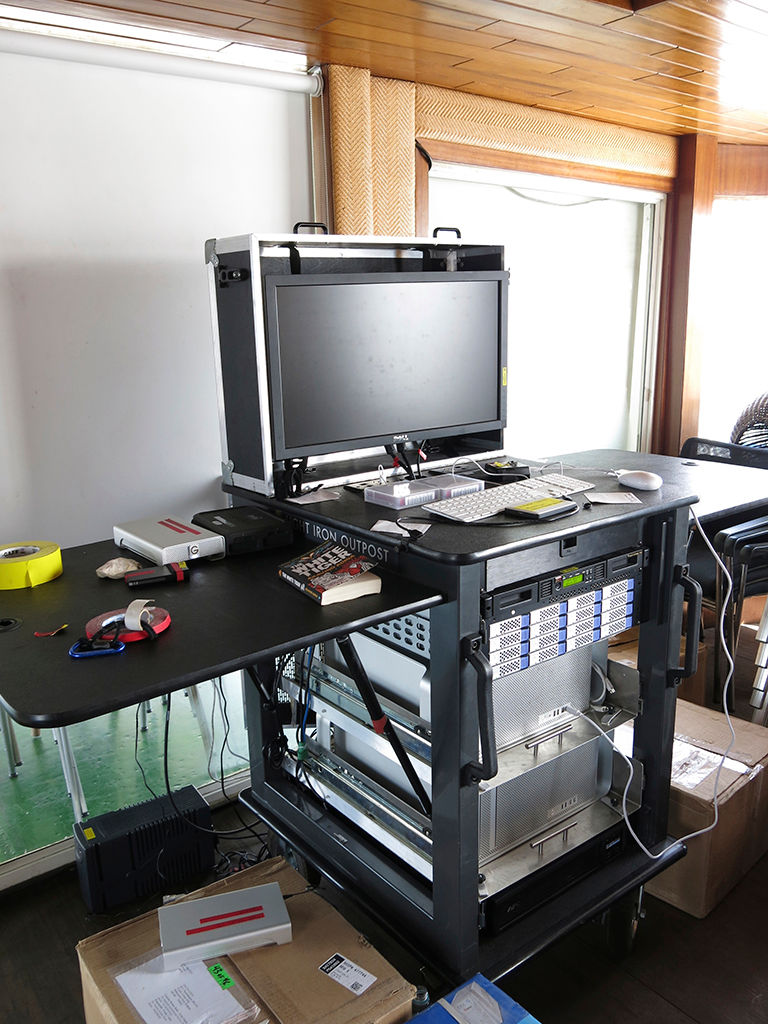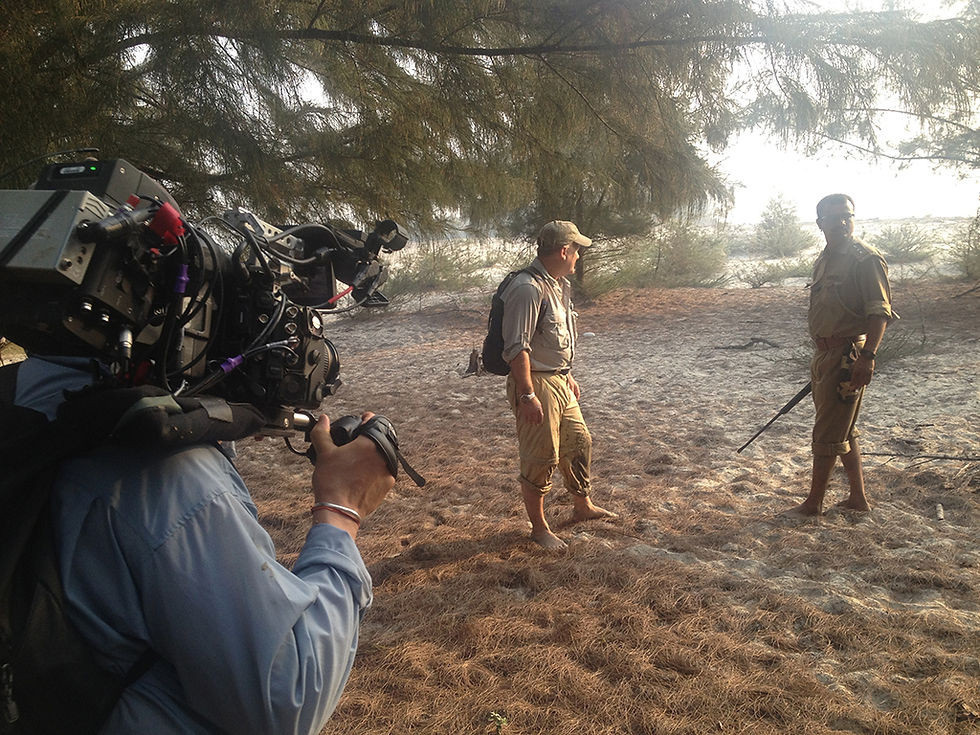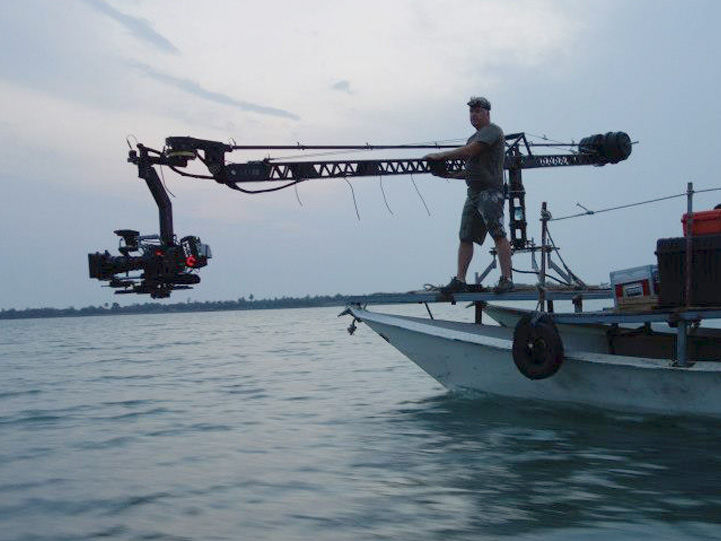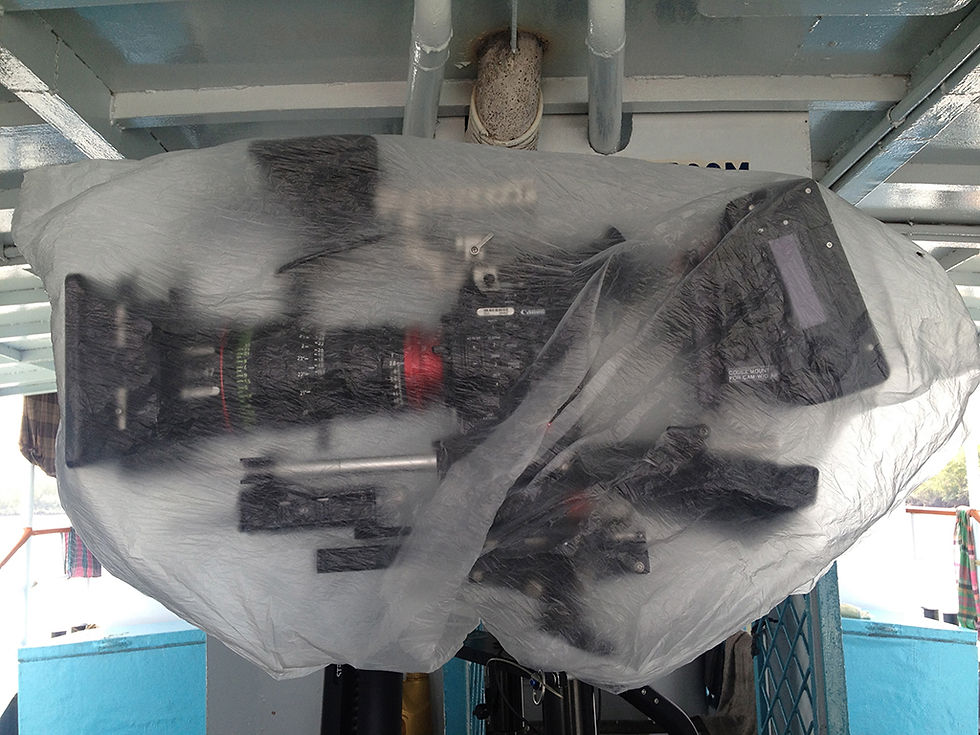Tiger Tiger Wrap-Up
- Matt Porwoll
- Apr 30, 2013
- 5 min read
Updated: Oct 6, 2021
After a long shoot in India and Bangladesh for the Tiger Tiger documentary, we have finally all returned home. Yes, the crew has been back for two weeks, but our equipment only just returned home this morning. The camera package of over 40 cases was shipped via freight both to India and back from Bangladesh. It took a little over a week for the gear to arrive in India and pass through customs, but took three weeks to return back to the States.
The filming went very well, and the equipment held up great. With the all of initial stresses going into a project like this using brand new technology in a foreign environment, we were all put at ease relatively quickly once we started shooting. Thankfully though, we had a lot of things work out in our favor. Our biggest worry was how would we keep up with the massive data management? Being a documentary, we could only roughly estimate the kind of shooting we would have each day. Luckily for us, and for our DIT Matthew Schroeder in particular, we ended up coming in well under our anticipated numbers. Even with that, we still pushed our download station to the max, running most of the day, every day. Let me give you an idea of how our data management was setup for the shoot.

Matthew used the Light Iron Outpost cart, a fully tricked out system tailored mostly for feature films and episodic television. Since we were shooting relatively large amounts of uncompressed 4K RAW files (at 1 terabyte per hour, any amount is a large amount!), we needed a system that could handle the data flow. Once a 512GB Codex Capture Drive was shot, containing a maximum of 27 minutes of footage, it mounts to the Light Iron via Codex’s Transfer Station. The media is then ingested into the cart’s internal 64TB RAID. From there, various lower resolution proxy files are created. Matthew exported Avid DNXHD 36 files for the editor and H.264 .mov files for dailies screening on either an iPad or laptop, with a generic LUT applied to normalize the RAW material. At the end of each day, all of the native video and audio files were striped to 2 redundant LTO tapes. Because of the length of the shoot and the amount of media being shot, it was cost-prohibitive to keep all of the media redundantly stored on hard drives. We chose to use LTO tapes as our master media, with a backup tape for safekeeping. Thankfully the Outpost cart was capable of queuing up to 8 tapes at a time, so this meant Matthew could prompt what media needed archiving, and the machine would execute without having to manually swap out tapes. This saved a lot of Matthew’s time, but still took a lot of physical write time. Downloading the Capture Drive takes a ratio of 2:1, meaning 2 hours to download 1 hour of media. Creating low-res dailies, 1:1, although this could run in parallel with another process. Striping the LTO tapes, 2:1 per tape. So when all is said and done, it took approximately 6 hours of process time for 1 hour of shot media to become fully backed up. This would mean for an average day of shooting 3-4 hours of footage, it would take 18-24 hours to complete the download! And this process didn’t normally start until after lunch…

We were here to shoot a documentary film involving styles of both handheld and setup stylistic shots. We were well equipped with a lot of fun toys such as a jib, Steadicam, and remote drone helicopter. Given this style of documentary filmmaking, the C500 / Codex 4K RAW solution fit well. With that said, I would not recommend this as the go-to option for any and all run-and-gun style documentary projects. Like I mentioned before, the data management is strenuous in even the most controlled of situations. But for all the precautionary steps we took to make the camera work well in a handheld shooting situations, it certainly has its limitations. The fact that the data does not stay recorded internally makes this the weakest link in this camera system. Much of the handheld shooting we did involved people having seated conversations. This meant Tom was shooting a lot with the camera cradled under his arm at hip-height. When shooting like this, there are two main points of contact with the body. The first is at the back of the camera between the arm and body, and the second is at the gripping hand just under the camera. Unfortunately for the inherent design of the camera, these are precisely the points where data exits the camera and enters the recorder. Thankfully, Jenni Morello, our 2nd AC, and/or I were always keeping a watchful eye on the Codex for indications of rolling out of media or interruptions in the data signal. There were a few times that during a re-frame or adjustment in the camera, the Codex flickered on and off, creating a quick break in recording. And because the recorder is independent of the camera, the operator is not aware of these problems while shooting. We ended up having to replace the cabling multiple times, as well as swapping out the physical camera body towards the end of the shoot. Ultimately, nothing major was lost, but it does mean for a shoot like this you must have the proper support team watching the operator’s back and ready to make the appropriate alterations when needed.

Claude Fortin, our Key Grip, operating the jib. Photo courtesy Geoffrey Uloth.
Despite these issues, I was amazed how well this seemly delicate camera system held up to the environment. It was at or over 100 degrees every day, with temperatures reaching 85 by 9:00am. Some mornings the humidity was so high it took over an hour for the lenses to acclimate. We were living and shooting on or around water constantly. But even in these elements, the camera never gave us problems. AbelCine’s specially-built fans kept the internal fans from ever turning on, despite the high outside temperatures. Neither the C500 nor the Codex gave us any problems with the humidity levels. (Our eyeglasses were another story…) With the proper attention paid to covering the cameras while traveling by speedboat or checking the camera and lens for splash while on the jib, we never had any water-related problems. In my book, these are major successes!

Our splash cover / cocoon for boat travel.
Now that the project is complete, I look forward to seeing and learning about all of the other new technologies coming out. This was a wonderful opportunity to work with cutting edge camera systems, from the beginning phases of testing and design, all the way through a month’s-long production. I am very thankful to the camera crew who made this experience a delight. You never know what problems will arise, but with the proper support team you can get through just about anything.
I look forward to sharing my future experiences with you, so stay tuned for more.